Looking for the ideal time for your Balinese escape? Generally, the dry season, from April to October, is considered best for sunny weather. For fewer crowds and pleasant conditions, you might consider the shoulder months of May, June, and September. Want to explore during the wet season for potentially lower prices and a quieter atmosphere? The months from November to March could be an option, just be prepared for more rain. Keep reading for a more detailed monthly breakdown and insights to help you pinpoint your perfect travel window!
Bali Travel Guide for First-Timers: Best Time to Travel, Flights from the USA
I. Introduction: Discovering the “Island of the Gods” Bali, often referred to as the “Island of the Gods,” is a captivating destination that conjures images of tranquil beaches, verdant rice paddies, and a vibrant culture. For travelers making their first journey from the USA, the enchantment of this Indonesian paradise is particularly strong. This guide is specifically designed to provide first-time visitors from the United States with all the essential knowledge required to plan an unforgettable Balinese adventure, addressing common queries about the best time to travel to Bali, understanding flights to Bali, and offering a comprehensive Bali travel guide for first timers. It is important to remember that Bali is a province and an island that forms part of the Republic of Indonesia, a large archipelago in Southeast Asia. Prepare to uncover the magic that awaits on this enchanting island as we delve into every crucial aspect to ensure a smooth and enriching travel experience.
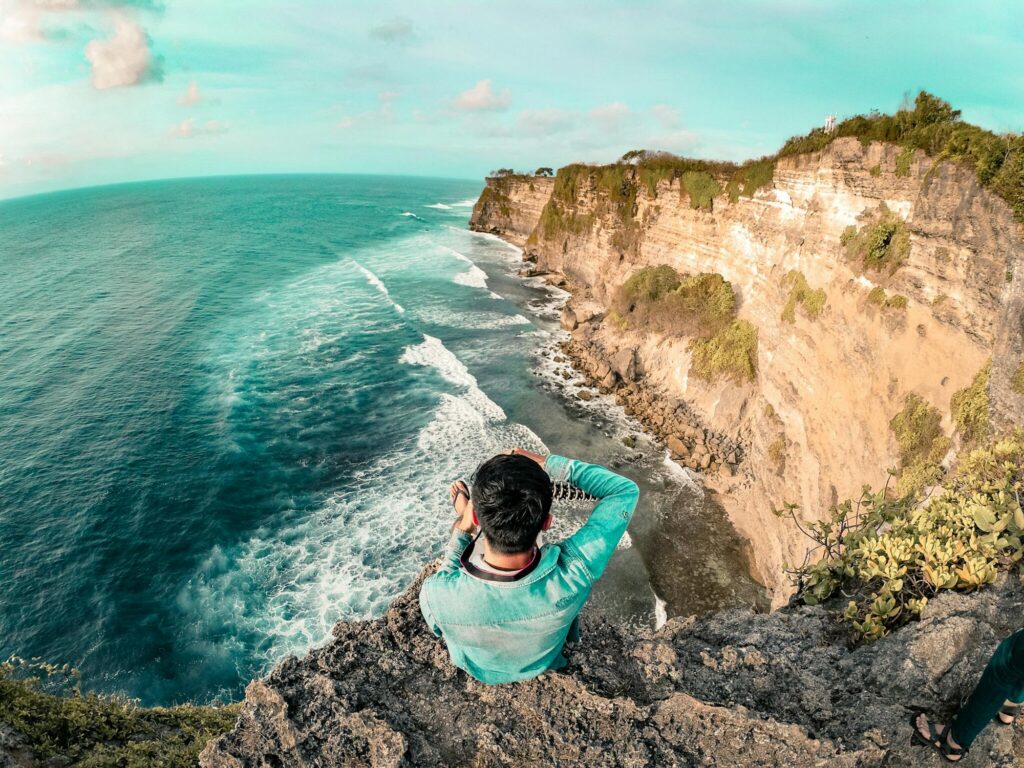
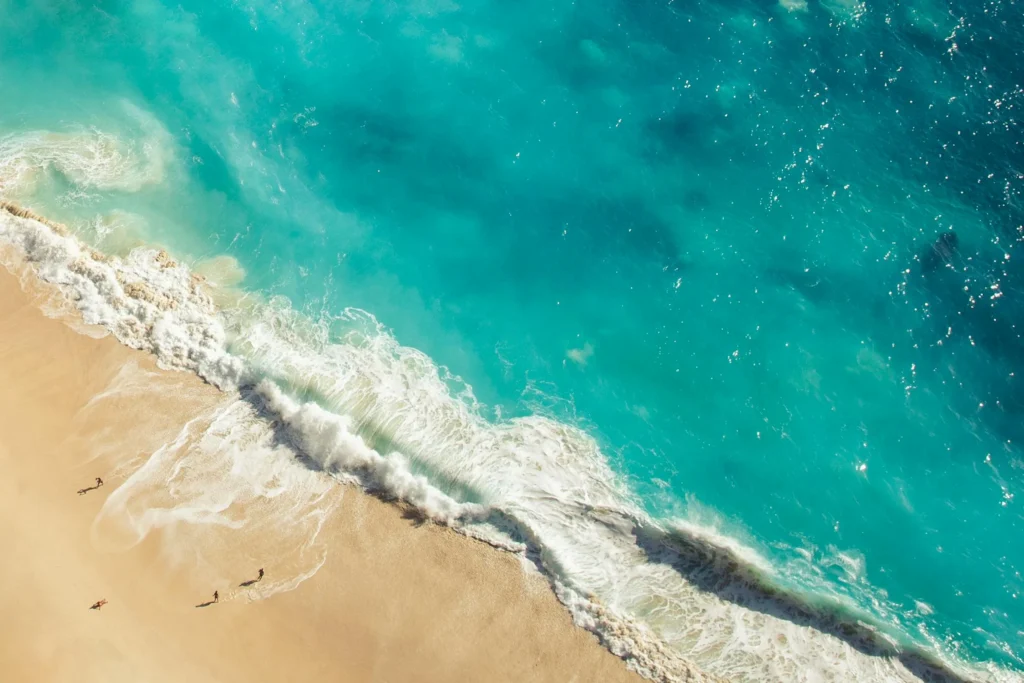
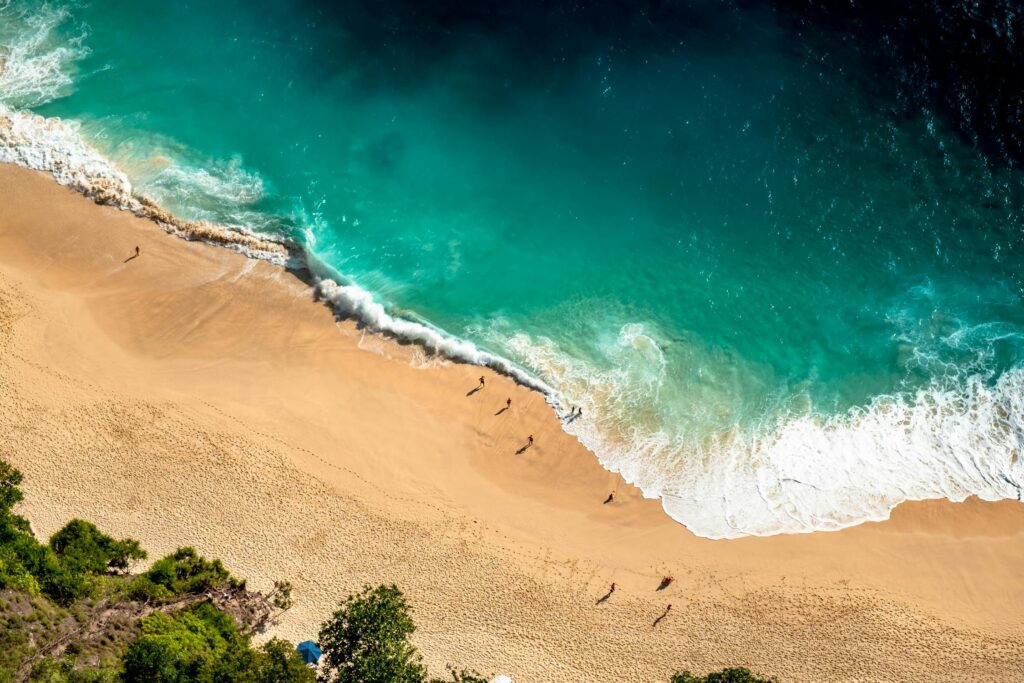
Bali Travel Guide: Quick Clarity Table for First-Time Visitors
| Category | Key Information at a Glance | Reader Action/Takeaway |
| Best Time to Visit | Dry Season (Apr-Oct): Sunny, best for beaches, surfing (West coast). Shoulder (May-Jun, Sep-Oct): Pleasant, fewer crowds, good deals. Wet (Nov-Mar): Rain, lush, quieter, budget-friendly. | Decide based on your priorities: Weather preference vs. budget vs. crowd levels. Check monthly breakdown for specifics. |
| Flights from USA | No Direct Flights. Expect layovers in Asian hubs (Singapore, Hong Kong, Dubai, etc.). Flight time: 20+ hours. Airlines: Singapore, Emirates, Qatar, Cathay Pacific, etc. | Prepare for a long journey. Factor in layover time. Use flight comparison sites. Book in advance for better deals. |
| Visa & Entry (US) | Visa on Arrival (VOA) for tourism (30 days, extendable). Passport: 6 months validity, blank pages. Return/onward ticket needed. VOA fee approx. $35 USD. | Ensure passport validity and blank pages. Budget for VOA fee. Check latest visa rules before travel. |
| Money Matters | Currency: Indonesian Rupiah (IDR). Exchange USD to IDR in Bali (authorized changers/ATMs). Cards widely accepted in tourist areas, but carry cash. | Exchange currency in Bali for better rates. Have cash for smaller places and tips. Inform your bank of travel dates. |
| Bali Basics | Bali is a province of Indonesia, not a country. “Island of the Gods,” Hindu culture. Capital: Denpasar. Cultural heart: Ubud. | Understand Bali’s context within Indonesia. Be aware of the unique Hindu culture and local customs. |
| Essential Customs | Dress modestly at temples (cover shoulders/knees). “Om Swastiastu” greeting. Right hand for giving/receiving. Respect offerings (Canang Sari). Be mindful of public behavior. | Show respect for Balinese culture. Learn basic phrases. Be aware of temple etiquette and general customs. |
| Getting Around | Taxis (Bluebird recommended, use meter). Ride-hailing apps (Grab/Gojek) popular, but some area restrictions. Traffic can be congested. | Use metered taxis or ride-hailing for transport. Be patient with traffic, especially in tourist areas. |
| Accommodation | Wide range: Hostels to luxury villas. Popular areas: Kuta (budget), Seminyak/Nusa Dua (upscale), Ubud (wellness/nature). Book in advance, especially in peak season. | Choose accommodation based on budget and preference. Book ahead to secure best options and prices. |
| Top Things to See/Do | Temples: Tanah Lot, Uluwatu, Tirta Empul, Besakih. Nature: Rice terraces, waterfalls, Mount Batur. Beaches: Kuta, Seminyak, Canggu, Nusa Dua, Uluwatu. Culture: Ubud, art villages, Kecak dance. | Prioritize attractions based on your interests. Plan your itinerary to cover key highlights. |
| Health & Safety | Vaccinations recommended (Hepatitis A, Typhoid). Travel insurance essential. Drink bottled/filtered water. Be cautious with food. Petty crime in tourist areas. Respect animal safety. Licensed money changers only. | Consult doctor for vaccinations. Get travel insurance. Be mindful of food/water safety and general safety precautions. |
| Packing Essentials | Light, tropical clothing. Sunscreen, insect repellent, medications. Rain jacket (wet season). | Pack light and for the tropical climate. Don’t forget essentials for sun protection and health. |
Timing Your Trip: Finding the Best Time to Visit Bali
Understanding Bali’s tropical climate and tourist seasons is key to planning your visit.
A. Understanding Bali’s Tropical Climate and Seasons
The Dry Season, generally spanning from April to October, is often considered the ideal time for outdoor pursuits. This period is typically characterised by sunny and breezy conditions with less rainfall and lower humidity, making it perfect for beach activities and water sports.
The Wet Season, which typically runs from November to March, brings occasional heavy rains and higher humidity. While rainstorms can be sudden and intense, they often pass quickly, allowing for a mix of sun and showers. The landscapes during this time are often lush and vibrant.
B. Navigating Bali’s Tourist Seasons
The High Season in Bali generally falls between June to August and November to December. These periods typically see larger crowds and higher prices for both flights and accommodations. This aligns with summer vacations in Europe, America, and Australia, as well as the Christmas and New Year holidays.
The Shoulder Seasons, which include April to May and September to October, are often considered by many as the best time to travel. During these months, you can expect pleasant weather with fewer tourists, potentially leading to better deals on accommodations.
The Low Season, from January to March, typically experiences the highest chance of rainfall. This period offers the quietest atmosphere and often the most budget-friendly prices.
C. Weather Conditions and Activities by Season
Dry Season (April-October): This season is ideal for beaches and sunbathing. It is also a great time for surfing, with the west coast experiencing the best swells from June to August. Hiking and exploring the inland areas are also favorable due to the sunny days and reduced humidity. Conditions are generally good for diving and snorkelling as well.
Wet Season (November-March): While rain can affect water clarity for diving and snorkelling and may make some hiking trails slippery, surfing on the east coast can be good during this period. The quieter atmosphere can be suitable for cultural exploration and indulging in spa retreats.
D. Month-by-Month Breakdown and Key Considerations
January: Low season with a high number of rainy days.
February: Low season, still significant rainfall. Some beaches may experience trash washing ashore.
March: Low season with decreasing rainfall. Nyepi (Balinese New Year) may fall in March or April, a unique cultural experience.
April: Mid-season, rainfall decreases significantly. Good for diving on the east coast. Be aware of potential crowds around Islamic holidays like Idul Fitri.
May: Mid-season, hot and sunny with low rainfall. Excellent for diving and mountain climbing, often good value.
June: Mid-season transitioning to high season, idyllic conditions with less heat and frequent breezes. Tourist numbers start increasing.
July & August: Peak of the high season, dry and busy with the lowest rainfall.
September: Mid-season, still dry with fewer crowds compared to July and August.
October: Mid-season transitioning to low season, rainfall starts to increase. Fewer tourists than peak season.
November: Low season with increasing rainfall.
December: Peak season due to Christmas and New Year, also high rainfall.
E. Aligning Your Visit with US Vacation Schedules and Preferences
Summer break for many in the US (July-August) coincides with Bali’s peak dry season, meaning you will likely encounter larger crowds and higher prices for flights and accommodations.
Travelling during the Christmas and New Year period (late December to early January) also falls within Bali’s high season.
The shoulder seasons (April-May and September-October) can offer a good balance for US travellers, providing pleasant weather while potentially avoiding the largest crowds and benefiting from better deals.
F. Considering Specific Interests
Beach lovers and water sports enthusiasts: The dry season (April to October) generally offers the best conditions.
Surfers: The west coast (Kuta, Seminyak, Canggu) typically has the best swells during the dry season (June-August), while the east coast (Sanur, Nusa Dua) can be good during the wet season (November-March).
Hikers: May to October are generally the best months, with July to October being particularly good for trekking Mount Batur, and May/June ideal for waterfall hikes.
Culture seekers: The rainy season can offer fewer crowds at temples and cultural sites.
Festival goers: Consider timing your trip with events such as the Bali Arts Festival (typically June-July), the Bali Kite Festival (around July), or the unique experience of Nyepi Day (Balinese Day of Silence, usually March or April).
The Journey: Flights from the USA to Bali
Getting to Bali from the USA involves a significant journey.
A. Bali’s Primary Gateway: Your arrival point in Bali will be Denpasar’s Ngurah Rai International Airport (DPS).
B. Lack of Direct Flights from the USA: Currently, there are no non-stop flight options available between the USA and Bali.
C. Anticipating Layovers: Typical Routes and Airlines
You will almost certainly have at least one stopover in Asia en route to Bali.
Common airlines operating connecting flights from various US airports to Denpasar include:
Singapore Airlines (typically via Singapore).
Emirates (typically with a layover in Dubai).
Qatar Airways (with connections in Doha).
Cathay Pacific (usually with a stop in Hong Kong).
Turkish Airlines (connecting via Istanbul).
Other airlines such as EVA Air (via Taipei), Korean Air (via Seoul), United Airlines, Delta Air Lines, Garuda Indonesia, and Air India also offer flights with layovers.
Common layover cities for these routes are major Asian hubs such as Singapore, Hong Kong, Doha, Dubai, Seoul, and Taipei. This is an important consideration regarding potential visa requirements for the layover country if you intend to leave the airport during your transit.
D. Estimated Flight Durations
For those departing from the East Coast of the USA, such as New York City, the total travel time can range from approximately 20 to 27 hours or even longer, depending on the chosen airline, layovers, and route.
Travelers from the West Coast, including cities like Los Angeles and San Francisco, can expect slightly shorter flight durations compared to the East Coast, but the journey will still likely take upwards of 20 hours with layovers.
Similarly, for those flying from the Midwest, such as Chicago, total flight times are generally in the realm of 22 hours or more, factoring in connection times. Given this considerable time investment, first-time visitors should be prepared for a long journey and plan their itinerary accordingly, allowing for adequate rest upon arrival to adjust to the time difference.
E. Strategies for Finding Affordable Flights
Consider travelling during the shoulder or low seasons (April-May, September-October, January-March) as flight prices can be lower during these times.
Booking your flights well in advance is generally recommended to secure better prices.
Being flexible with your travel dates can also lead to savings. Mid-week flights (Tuesdays and Wednesdays) can sometimes be cheaper than weekend flights.
Utilize flight comparison websites and apps such as Google Flights, Skyscanner, Kayak, and Momondo to compare prices from different airlines and travel agencies.
Consider setting up price alerts on these platforms to monitor price fluctuations for your desired travel dates.
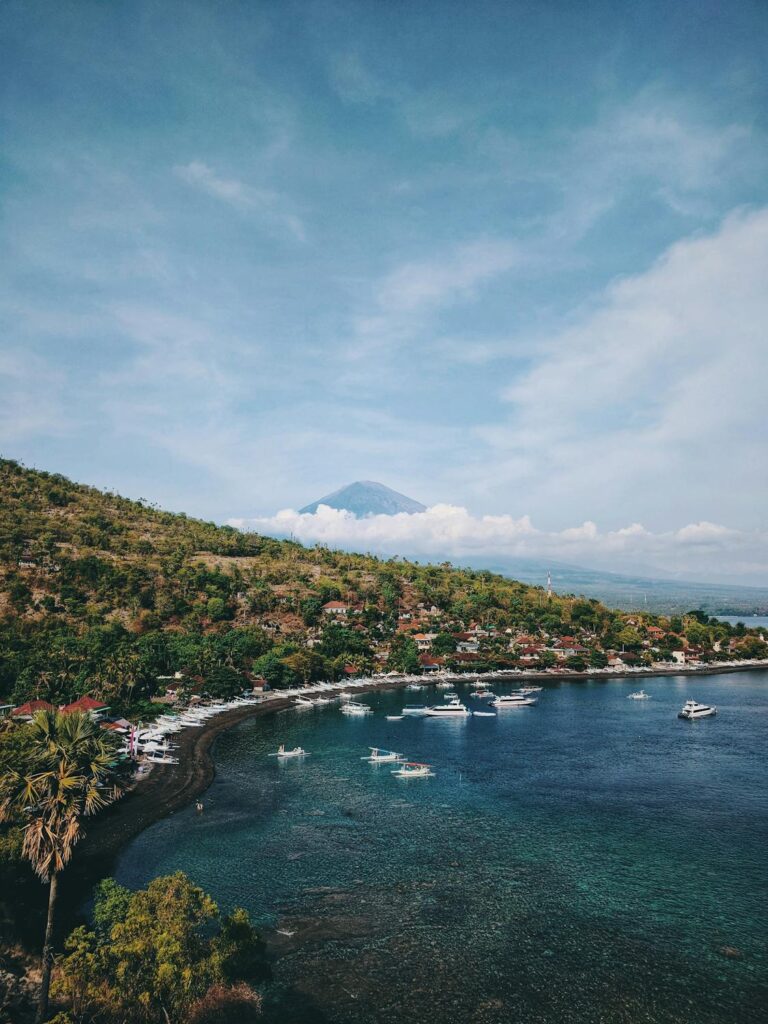
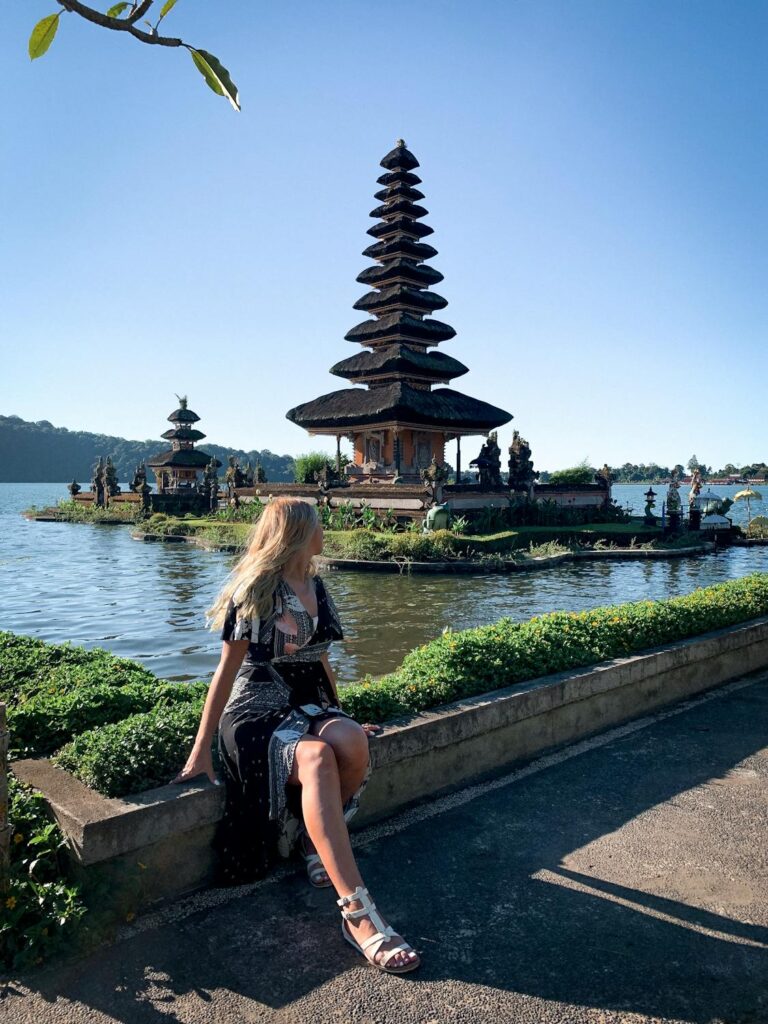
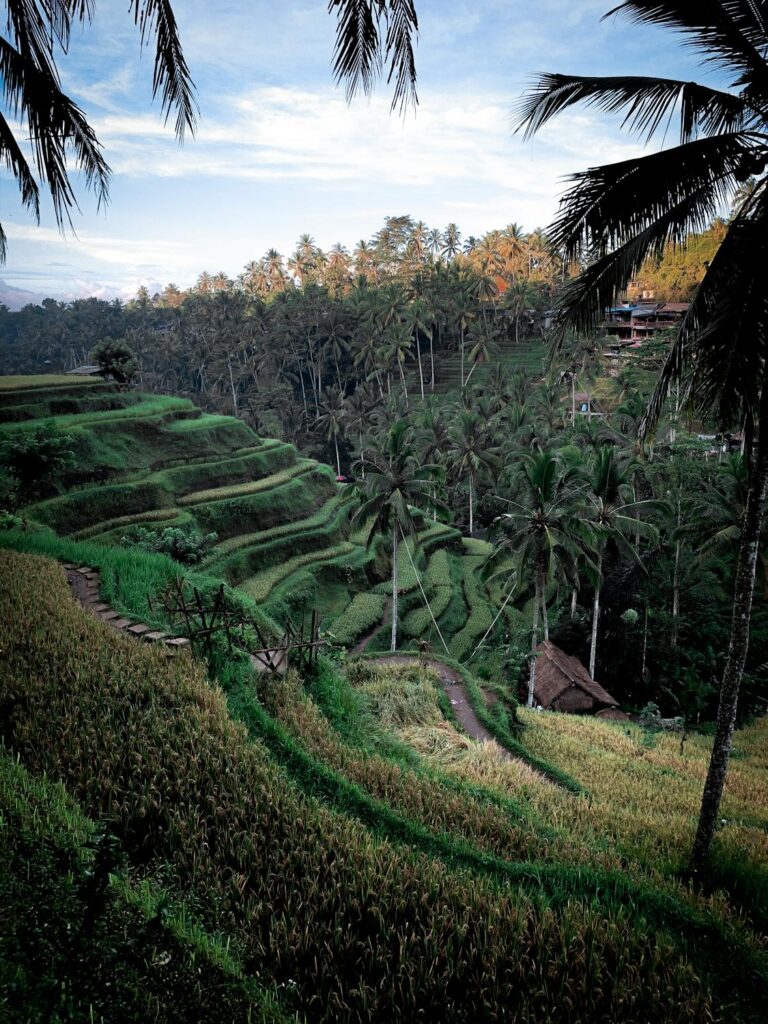
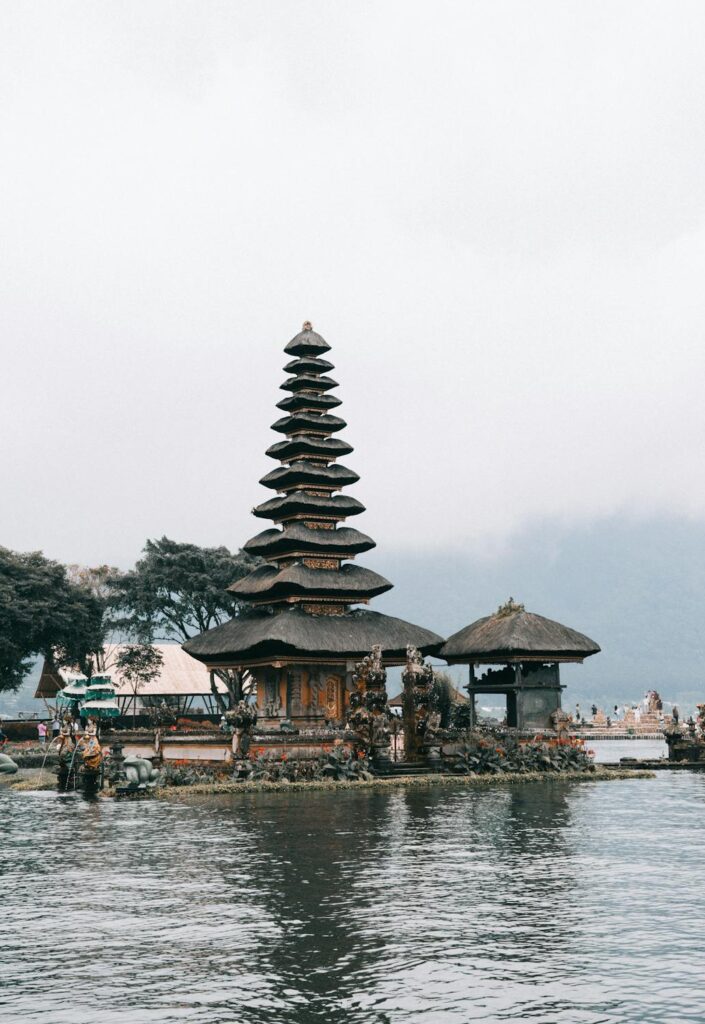
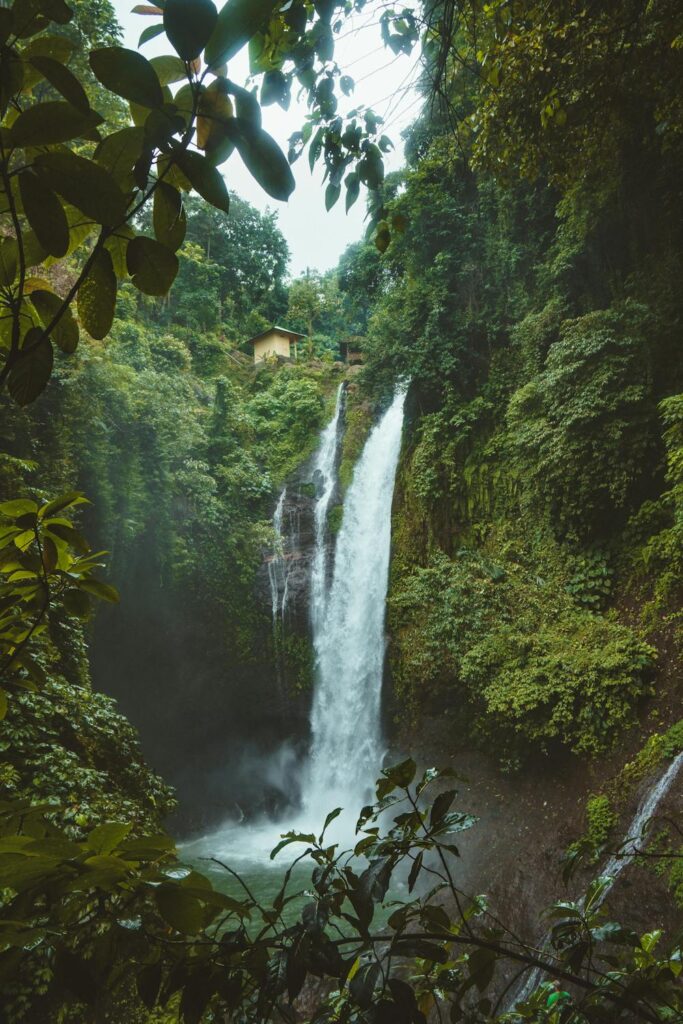
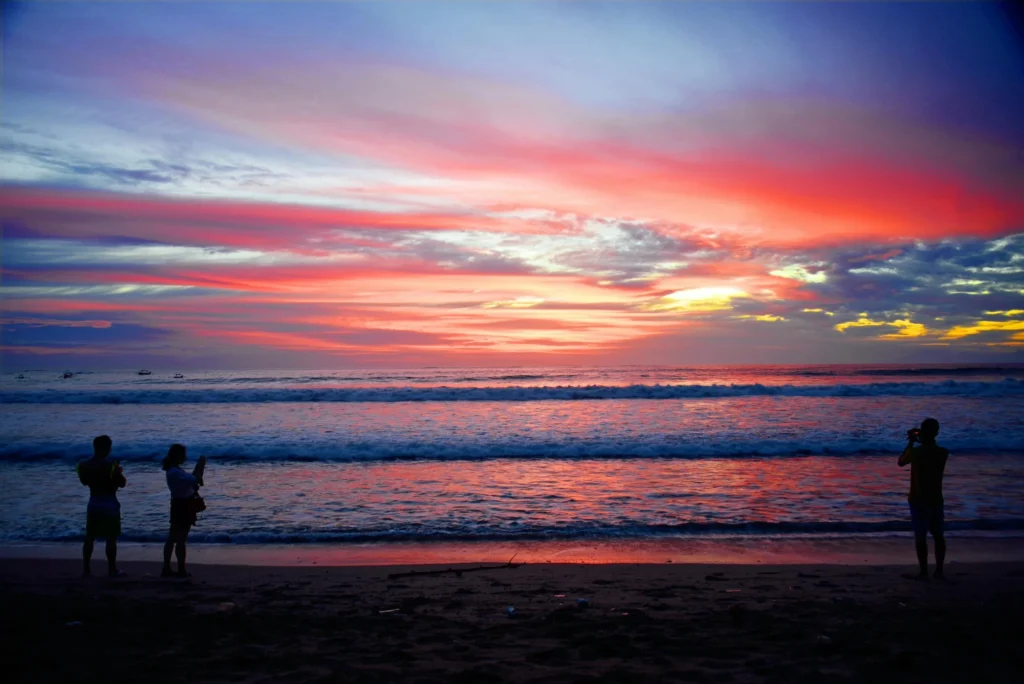
Bali Travel Guide for First-Timers: Essential Knowledge
Preparing for your first trip to Bali involves understanding some key practicalities and cultural nuances.
A. Visa and Entry Requirements for US Citizens
For tourism purposes, US citizens can typically obtain a Visa on Arrival (VOA).
Your US passport must have a validity of at least six months beyond your intended arrival date in Indonesia and should contain at least two blank pages for entry and exit stamps.
It is also necessary to have proof of a confirmed return or onward flight ticket.
The current fee for the VOA is approximately IDR 500,000 (roughly $35 USD).
The initial 30-day VOA can be extended once for an additional 30 days by visiting an immigration office in Bali before the initial visa expires. This extension also incurs a fee of around IDR 500,000. It’s advisable to begin the extension process about a week before your initial visa is set to expire.
For US citizens planning to stay in Bali for longer than 60 days, it is necessary to apply for a different type of visa, such as the C1 Visit Visa (211A), which can allow for a stay of up to 180 days. This type of visa must be obtained from an Indonesian embassy or consulate in the USA before commencing your travel.
Given the potential for changes in visa policies, it is always recommended to check the latest requirements from official Indonesian immigration sources before your trip.
B. Currency and Money Exchange
The official currency of Indonesia is the Indonesian Rupiah (IDR).
It is advisable to exchange your USD for IDR upon arrival in Bali for better exchange rates compared to exchanging in the US.
Authorized money changers are the recommended places for currency exchange. Look for those with licenses and QR codes from Bank Indonesia.
Be cautious of unofficial money changers offering unusually high rates, as this can be a scam.
Withdrawing IDR from reputable bank ATMs is also a convenient option, but be aware of potential withdrawal fees from your bank and the local ATM.
Credit and debit cards are widely accepted in tourist areas, especially in hotels, restaurants, and larger shops. However, it is wise to have cash on hand for smaller establishments, markets, and tips.
Remember to inform your bank about your travel dates to avoid any issues with your cards being blocked.
C. Understanding Bali’s Location and Cultural Context
Bali, often mistakenly thought of as a country, is in fact a province and an island that forms part of the Republic of Indonesia, located in Southeast Asia. Indonesia is situated between the Indian and Pacific Oceans, north of Australia and Papua New Guinea.
Within Indonesia, Bali is the westernmost island of the Lesser Sunda Islands, located east of Java and west of Lombok. It is separated from Java by the Bali Strait and from Lombok by the Lombok Strait.
The capital of Bali province is Denpasar, a bustling city on the island’s southern coast. Further inland lies Ubud, in the uplands, widely recognized as Bali’s cultural heart.
Bali is renowned as the “Island of the Gods,” and its culture is deeply intertwined with Hinduism, a unique form that distinguishes it from the majority-Muslim population of Indonesia. Balinese culture places a strong emphasis on harmony, respect, and spirituality.
D. Essential Travel Tips and Local Customs
While English is spoken in many tourist areas of Bali, particularly by those working in the tourism industry, learning a few basic phrases in Bahasa Indonesia will be greatly appreciated by locals and can enrich your interactions. Simple greetings like “Halo” (Hello), “Selamat pagi” (Good morning), “Terima kasih” (Thank you), and “Berapa harga?” (How much?) are useful.
When meeting someone, a polite greeting is “Om Swastiastu,” meaning “peace and well-being be upon you,” often accompanied by the “Sembah” gesture (palms pressed together in front of the chest with a gentle bow).
When visiting Bali’s numerous sacred temples, it’s essential to dress modestly, ensuring shoulders and knees are covered. Wearing a sarong (a piece of fabric wrapped around the waist) and a sash (a belt tied around the hips) is typically required for both men and women, and these are often provided at the temple entrance.
It’s considered disrespectful to step over the small woven palm-leaf offerings, known as “Canang Sari”, that are placed on doorsteps, shops, and temples; instead, step around them.
When giving or receiving anything, always use your right hand or both hands, as the left hand is traditionally considered unclean.
Public behaviour in Bali emphasizes harmony, so it’s advisable to speak softly and avoid excessive public displays of affection.
Showing respect for personal space is also important, and touching someone’s head, even a child’s, is considered inappropriate as the head is regarded as sacred.
In Balinese culture, feet are considered the lowest part of the body, so avoid placing them on tables or chairs in public spaces.
Pointing with your index finger is seen as rude; using your thumb is more appropriate. When gesturing someone to come towards you, use your whole hand with the palm facing downwards.
When taking photographs, especially in sacred areas or during ceremonies, be mindful and respectful, and always seek permission before photographing individuals.
Understanding and adhering to these local customs will not only enhance your travel experience but also foster positive interactions with the Balinese people.
E. Getting Around Bali
Taxis are readily available in most tourist areas, with Bluebird Taxi being widely regarded as the most reputable company known for using meters. It is generally advisable to ensure that the driver uses the meter for fare calculation.
In addition to traditional taxis, ride-hailing services like Grab and Gojek have become incredibly popular in Bali, offering a convenient, often more affordable, and user-friendly way to get around. These services allow you to book rides through your smartphone and often provide transparent pricing. However, it’s worth noting that some areas in Bali might have local restrictions on the operation of ride-hailing services.
Traffic in popular tourist areas like Kuta, Seminyak, and Ubud can be quite congested, so factor this into your travel times.
F. Accommodation Options
Bali offers a wide range of accommodation options to suit different budgets and preferences. You can find everything from budget-friendly hostels and guesthouses (“Losmen”) to luxurious villas and high-end resorts.
Popular areas like Kuta tend to have more budget-friendly options, while Seminyak and Nusa Dua are known for their upscale resorts and villas. Ubud offers a mix of options, often with a focus on wellness retreats and villas surrounded by nature.
It is highly recommended to book your accommodation in advance, especially if you plan to travel during the peak tourist season, to ensure you secure the best options and prices. Reading reviews from other travelers on reputable websites can provide valuable insights.
G. Top Attractions and Activities for First-Timers
Iconic Temples:
Tanah Lot: A stunning sea temple perched on a rock formation offshore.
Uluwatu Temple: Known for its dramatic clifftop setting and Kecak dance performances at sunset.
Tirta Empul Temple: A sacred water temple with bathing pools.
Besakih Temple (Mother Temple): Bali’s most important and holiest temple complex.
Ulun Danu Beratan Temple: A picturesque temple located on Lake Beratan in the highlands.
Natural Landscapes:
Tegalalang Rice Terraces: Famous for their stunningly sculpted emerald slopes.
Jatiluwih Rice Terraces: Another impressive UNESCO World Heritage site offering scenic hikes.
Waterfalls: Tegenungan Waterfall, Sekumpul Waterfall (tallest), Banyumala Twin Waterfall, Gitgit Waterfall.
Mount Batur: Popular for sunrise treks with breathtaking views.
Beaches:
Kuta Beach: Popular for surfing, especially for beginners, and its lively atmosphere.
Seminyak Beach: Offers an upscale vibe with trendy resorts and beach clubs.
Canggu: Known for its blend of rice paddies, beautiful beaches, excellent surf spots, and hip cafes.
Nusa Dua & Benoa: Known for calmer waters and family-friendly resorts.
Uluwatu Beaches (Suluban, Padang Padang, Dreamland, Balangan, Bingin): Famous for dramatic cliffs and world-class surfing.
Sanur: A quieter, more family-friendly beach area known for its beautiful sunrises and calm waters.
Gili Islands (Trawangan, Meno, Air) & Nusa Islands (Lembongan, Ceningan, Penida): Offer stunning natural beauty, fantastic diving and snorkelling.
Cultural Experiences:
Ubud: Considered Bali’s cultural heart, with a spiritual atmosphere, yoga retreats, art scene, and the Monkey Forest.
Artist Villages (Mas & Celuk): Witness skilled artisans creating wood carvings and silver jewelry.
Kecak Dance: A traditional Balinese dance performance, often performed at sunset at Uluwatu Temple.
Bali Arts Festival (June-July): Showcases the island’s rich artistic and cultural heritage.
Regional Highlights: Each region offers a distinct experience.
H. Health and Safety Considerations
It is recommended to consult your doctor or a travel health clinic at least 6 to 8 weeks before your departure to get personalized advice on necessary vaccinations. Generally, routine vaccinations are advised. Vaccinations for Hepatitis A and typhoid are also frequently recommended due to the potential risk of food and waterborne illnesses. Consider vaccination against Hepatitis B and rabies depending on your planned activities. If you plan to spend time in rural areas during the rainy season, your doctor might also recommend a vaccination for Japanese encephalitis.
Ensure you have comprehensive travel insurance that covers medical treatment, including potential medical evacuation.
Adhering to food and water safety guidelines is vital. Drink only bottled or filtered water, even when brushing your teeth. Avoid tap water and ice, especially in establishments with questionable hygiene. opt for well-established restaurants and vendors that prepare food fresh and under hygienic conditions, and exercise caution with street food. Avoid raw or undercooked food. Wash your hands frequently. Be aware of “Bali Belly” (traveler’s diarrhoea) and consider packing over-the-counter remedies.
Be mindful of petty crime, especially in crowded tourist areas. Keep valuables secure and avoid carrying large sums of cash.
Exercise caution when interacting with animals, particularly stray dogs and monkeys, as they can carry diseases. Avoid feeding or petting them.
If you rent a scooter or motorbike, always wear a helmet and ensure you have the necessary International Driving Permit with a motorcycle endorsement.
Only exchange currency at official, licensed money changers.
Be particularly cautious about drink spiking and methanol poisoning from locally produced spirits like Arak; it’s safest to consume alcohol only at reputable and licensed establishments.
Remember that drug laws in Indonesia are very strict, with severe penalties for offenses.
It’s a good practice to monitor local media for any safety updates or warnings during your stay.
Be aware that Bali can be particularly busy around major holidays such as Easter, Christmas, New Year, Chinese New Year, and the end of Ramadan (Idul Fitri). This can impact traffic and the availability of services.
I. Packing Essentials
Pack light and comfortable clothing suitable for the tropical climate.
Don’t forget essentials like sunscreen, insect repellent, and any necessary personal medications.
If you are travelling during the wet season, it is advisable to pack a lightweight rain jacket or umbrella.
Conclusion: Embrace the Magic of Bali
Bali truly offers an enchanting blend of breathtaking natural beauty, a rich and vibrant culture, and the warm hospitality of its people, making it an ideal destination for first-time travellers from the USA. By carefully planning your trip, taking into consideration the best time to visit, understanding the logistics of your journey, showing respect for local customs, and staying informed about health and safety, you can ensure an incredibly memorable and rewarding experience on the “Island of the Gods“. Be open to embracing new experiences, immerse yourself in the unique local culture, and allow yourself to be captivated by the undeniable magic of Bali.
Useful Resources for Planning Your Trip
For further assistance in planning your trip, consider the following useful resources:
Official tourism website of Indonesia: Look for the official tourism board website for the most up-to-date information.
US Embassy in Jakarta: Provides important safety and travel information for US citizens in Indonesia.
Centers for Disease Control and Prevention (CDC) – Indonesia: Offers health information and recommendations for travellers.
Flight comparison and booking platforms: Google Flights, Skyscanner, Kayak, Momondo, Expedia, Booking.com, Agoda.
Accommodation booking websites: Booking.com, Agoda, Expedia, TripAdvisor.
Bali-specific travel information websites: Bali.com, Klook Travel Blog.
Travel forums: Tripadvisor (Bali Forum), Reddit (r/bali).
Frequently Asked Questions About the Best Time to Visit Bali
- What are the typical weather seasons in Bali? Bali experiences two main seasons: the dry season, which generally runs from April to October, and the wet season, from November to March.
- When is generally considered the best time to visit Bali for good weather? The dry season (April to October) is generally considered the best time to visit Bali for the most pleasant conditions. You can expect reliably dry and sunny weather during these months.
- Which months within the dry season are often highlighted as particularly good? Months like May, June, and September are often highlighted as particularly good, offering fine weather and potentially fewer crowds than the peak months of July and August. These are often considered shoulder season months.
- What is the weather like in Bali during the dry season? Bali’s dry season sees an average temperature of 27-32°C. You can generally expect clear skies and warm days. Coastal areas are typically warm and humid year-round, with the dry season being sunny and breezy.
- What are the peak tourist seasons in Bali? Bali’s peak tourist seasons are typically June to August and November to December, which include school holidays and the Christmas/New Year period. July and August are major peak months. Easter and Chinese New Year can also see increased visitor numbers.
- When are the quietest times to travel to Bali? The low season is generally from January to March, coinciding with the height of the wet season. Months like February can also see fewer crowds.
- What is the weather like in Bali during the wet season? The wet season (November to March) brings more frequent rain and higher humidity. Skies can be grey, gloomy, and overcast, and the waves can be a little rougher. However, showers are often short-lived, and the landscape becomes lush and vibrant. Temperatures average between 25°C to 27°C.
- Can I still enjoy a trip to Bali during the wet season? Yes, many tourists prefer the wet season as rates are often cheaper and the crowds are more manageable. While beaches might not be in the best condition at times due to rain and potential trash washing ashore in January and February, other activities like canyoning and white water rafting can be options.
- What is the shoulder season in Bali? The shoulder seasons, April-May and September-October, can offer a balance of good weather and fewer crowds.
- What are the best months for diving and snorkeling in Bali? Conditions are generally good for diving and snorkeling in April, especially on Bali’s east coast. May also offers excellent conditions for diving due to hot and sunny weather. The dry season, from May to September, is generally the best time for diving and snorkeling as visibility is excellent due to low rainfall and plenty of sunshine.
- What about hiking in Bali? When is the best time? The dry season (April to October) is prime time for hiking, particularly multi-day hikes which aren’t safe when the ground is wet and muddy. May offers excellent conditions for mountain climbing.
- Does it always rain every day during the wet season? While the wet season sees more frequent rain, showers are often short-lived. You can still enjoy long periods of sunshine and very warm temperatures.
- Is it hotter in the dry season or the wet season? May is typically hot and sunny and considered one of the hottest months. Average high temperatures in the dry season can reach the low 30s (°C). The wet season also has warm temperatures, generally ranging from the mid to high 20s (°C).
- Are there regional variations in Bali’s weather? Yes, coastal areas are generally warm and humid. The Bukit Peninsula and the Nusa Islands have a generally drier climate compared to the rest of Bali, with a long dry season and less rainfall even during the wet months. Mountains and volcanos can have different rainfall patterns.
- Should I be concerned about crowds if I travel during the dry season? The dry season coincides with the high season, so you can expect more tourists, especially during June and July.
- Are flights and accommodations more expensive during the peak season? Yes, it can be more expensive to book flights, accommodation, and activities during the peak tourist season.
- When can I find potentially good value offers for flights and accommodation? Travelers might find good value offers in May as it’s outside the main peak. The shoulder or low seasons can often lead to more budget-friendly airfares. Months like February, May, June, and September are frequently recommended for a combination of good weather and manageable prices.
- What is kite season in Bali? From June to August, the island often experiences sweeping gusts of winds, which is known as “kite season” by the Balinese locals, with hundreds of Balinese kites dancing in the wind.
- What about visiting Bali in April or October? April marks the transition from the wet season, with rainfall decreasing. Conditions are generally good, especially for diving and snorkeling on the east coast. October is in the moderate season with mild temperatures and intermittent rains as it transitions towards the wet season. Both months can have fewer tourists compared to the peak season.
- Is June a good time to visit Bali? Yes, June enjoys idyllic conditions with consistent sunshine and warm temperatures. It’s before the major July-August crowds arrive, potentially offering a less busy experience.
By considering these frequently asked questions and answers, you can better plan your trip to Bali based on your priorities regarding weather, crowds, and budget.
Ready to pinpoint your perfect Bali moment? Don’t let your dream escape just sit there – like, comment, share your ideal travel month below, and subscribe for more insider tips on making your Balinese adventure unforgettable!
For more articles go to: https://xploreheaven.com/blogs-updates/
